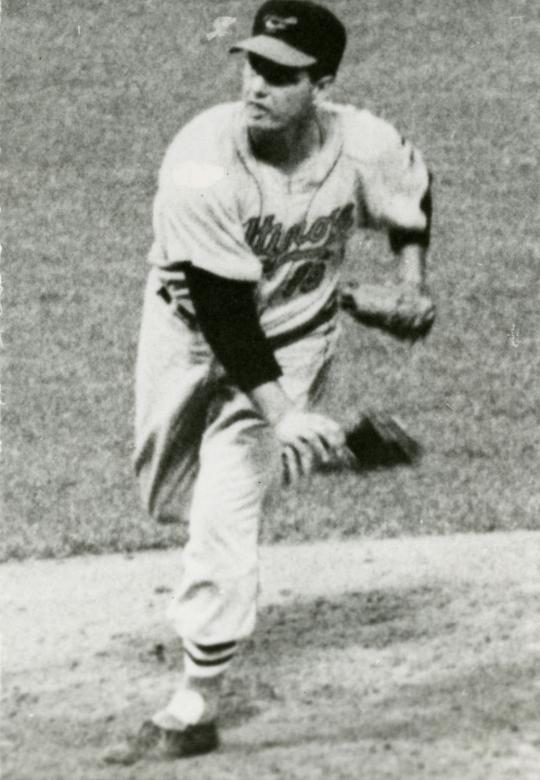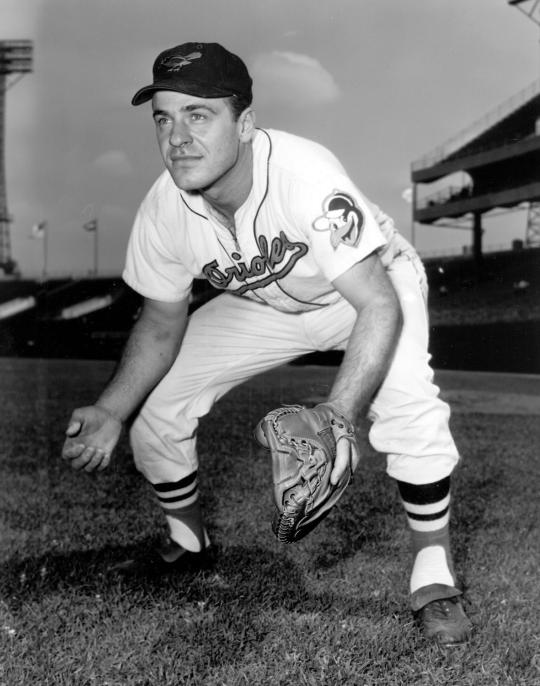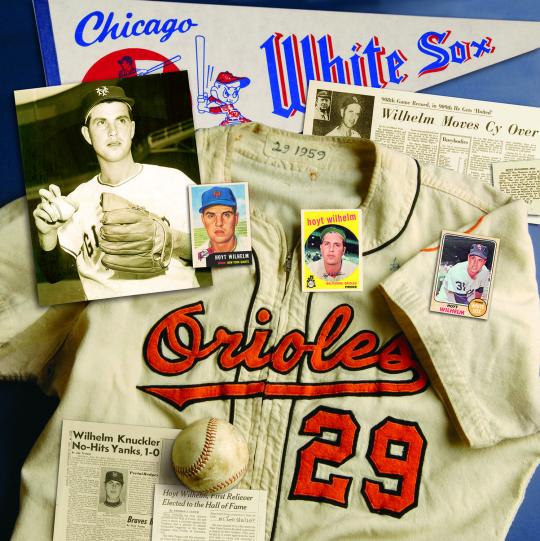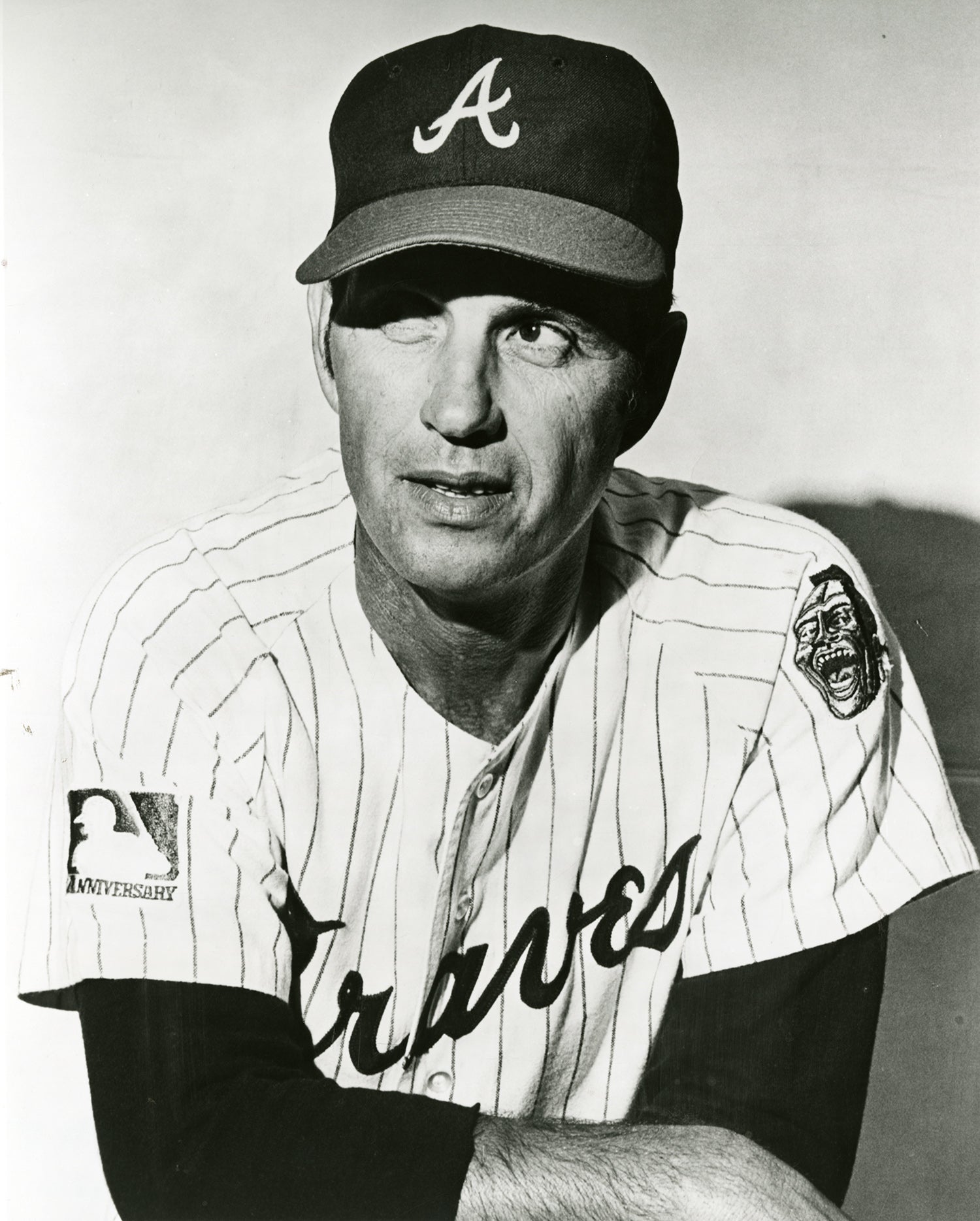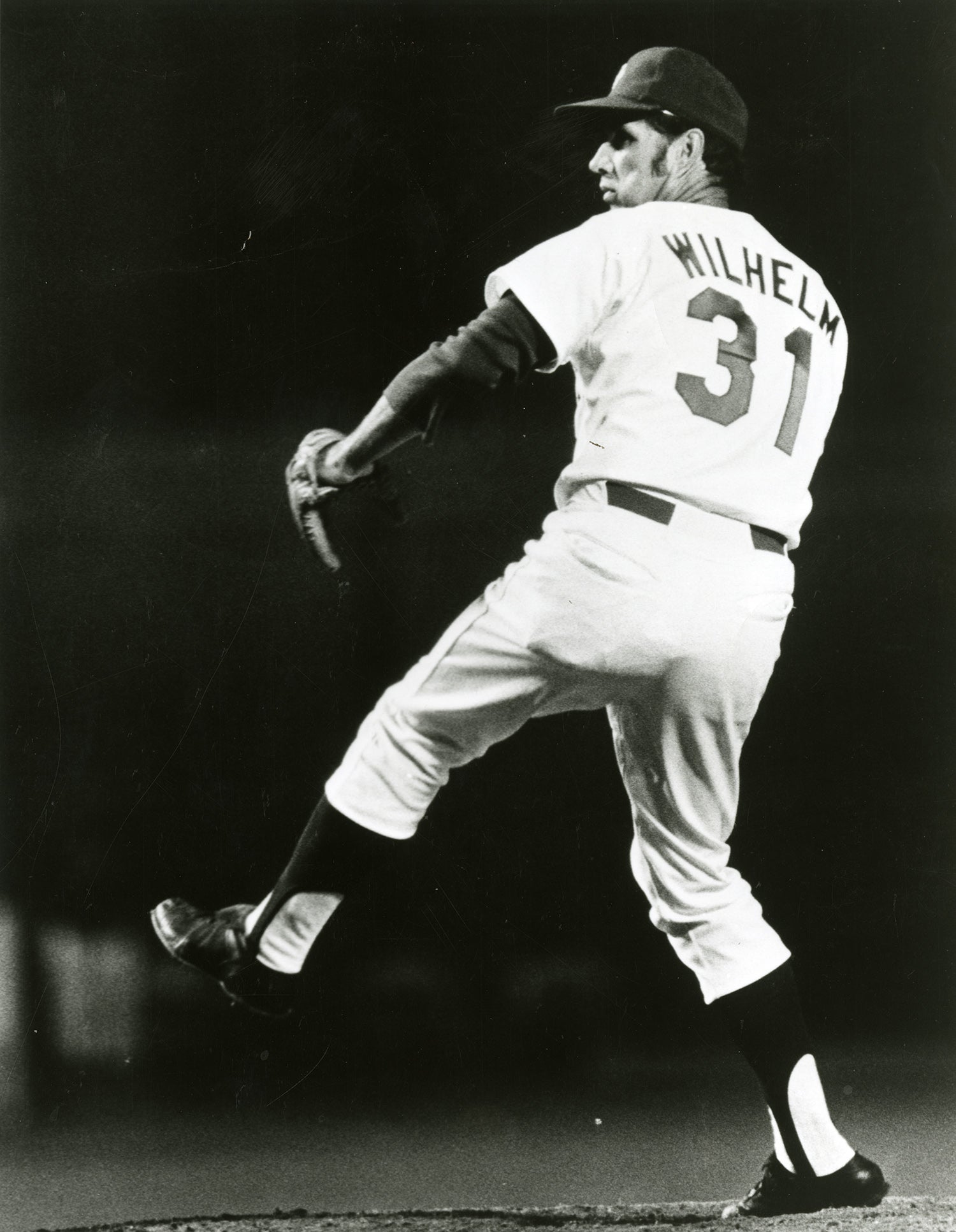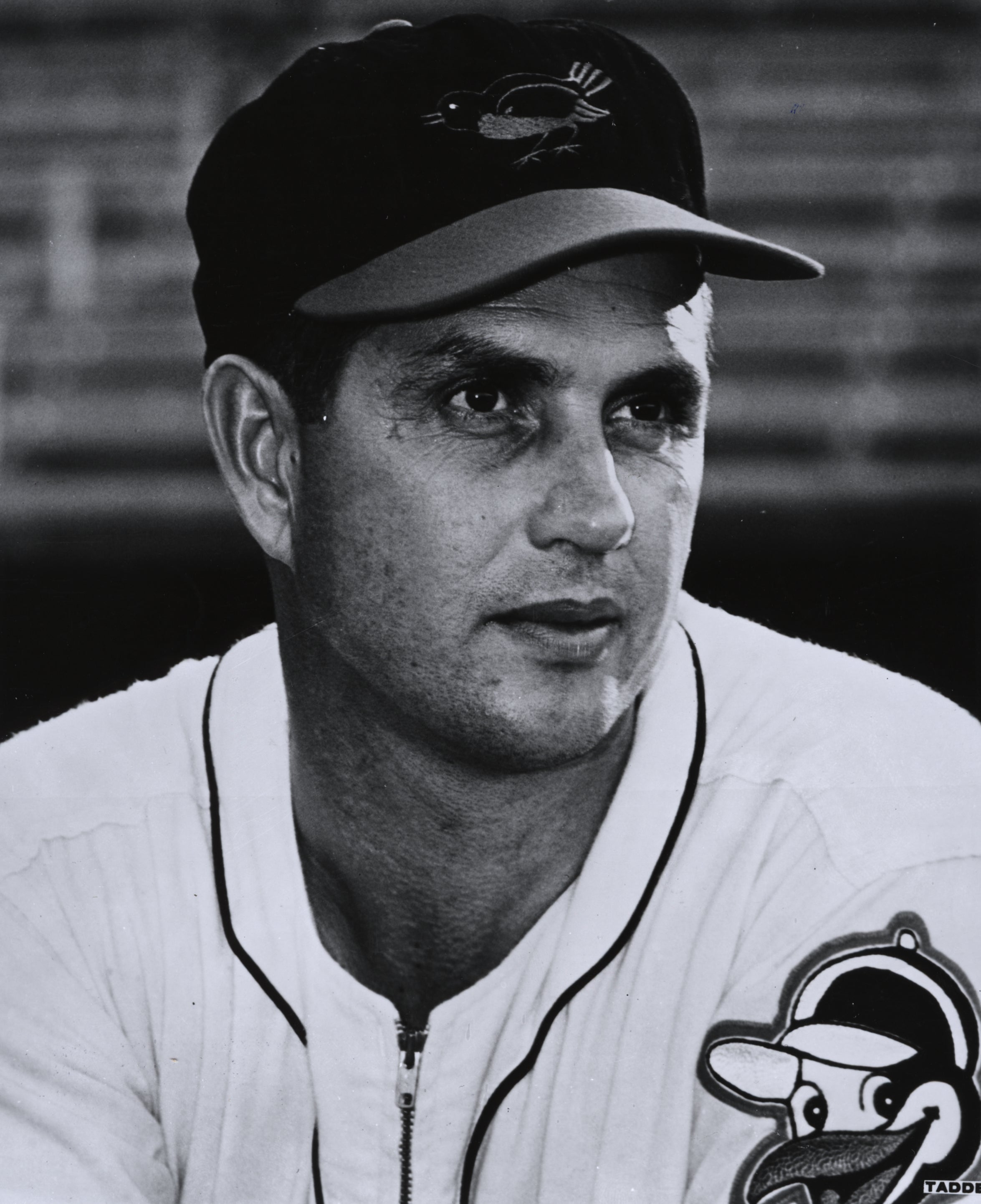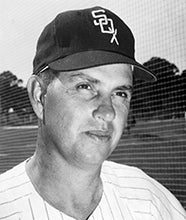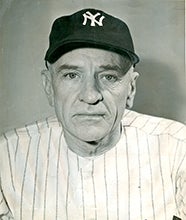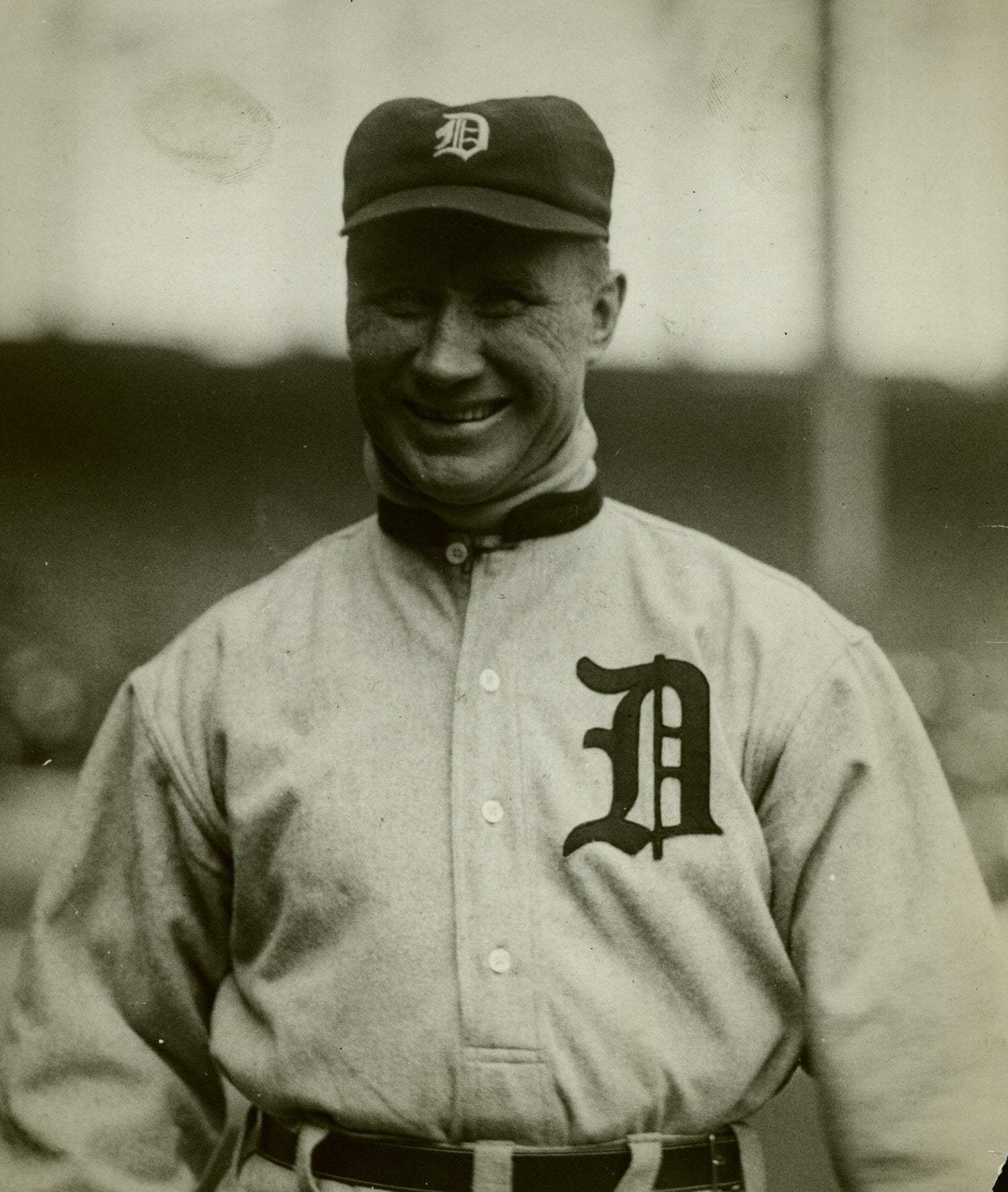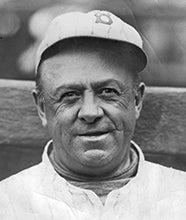- Home
- Our Stories
- Hoyt Wilhelm pitches no-hitter vs. Yankees
Hoyt Wilhelm pitches no-hitter vs. Yankees
Baseball is full of unwritten rules. From extraordinarily slow home run trots to stealing a base when a team is up 11-0, certain actions and plays have been taboo for virtually the game’s entire history.
But not everyone has subscribed to baseball’s unwritten rule book, former Yankees right fielder Hank Bauer included. So on Sept. 20, 1958, with the Yankees down to their last out and Baltimore’s Hoyt Wilhelm on the verge of a no-hitter, Bauer tried to bunt.
“If he’s going to get a no-hitter, let him earn it,” Bauer said to the Chicago Tribune. “I was trying to get a hit. That’s baseball. I’m sorry it rolled foul.”
Bauer eventually popped out to second base, ending the game and giving Wilhelm his unlikely no-hitter.
“A …knuckleballing right-hander, a relief man for most of his career and regarded as virtually a washout at the beginning of this season, tossed a no-hitter today,” wrote New York Times columnist John Drebinger. “The baldish North Carolinian, whose delivery often baffles catchers as well as batters, held the Yankees hitless and runless as the Orioles gained their second straight triumph over the Bombers, 1-0.”
Although Drebinger’s description of a historic feat seems a bit harsh in retrospect, it’s hard to blame him for being surprised. The 36-year-old pitcher had undergone a somewhat tumultuous two years, during which he pitched for the Indians, Cardinals and Orioles. Just a month before his no-hitter in August of 1958, Wilhelm was claimed on waivers by the Baltimore Orioles after going 2-7 with Cleveland that year.
On top of that, on July 20 against the Orioles, Wilhelm was on the mound when Indians catcher Jay Porter tied an MLB record for most passed balls in a game, with four.
But on Sept. 20, everything seemed to fall into place for the future Hall of Famer. A far cry from his troubles earlier in the season, behind the plate Wilhelm was supported by Orioles catcher Gus Triandos, who made sure his starter wouldn’t miss yet another shot at history.
“My knuckler was as good or better than I’ve ever seen it work,” Wilhelm said to UPI after the game. “Gus handles the knuckleball as well as any catcher I’ve ever thrown to.”
Even the weather – a light wind-blown drizzle – seemed to aid him.
“Usually I don’t care for wind, but it seemed to help my knuckleball,” Wilhelm said. “When I threw high, it broke upward; and the low pitches broke down. Most of my eight strikeouts were on knucklers.”
Facing a Yankee lineup that included three future Hall of Famers in Mickey Mantle, Yogi Berra and Enos Slaughter, Wilhelm’s triumph couldn’t be credited to a poor offensive showing by the Bronx Bombers.
“It was the cleanest no-hitter I’ve seen in a long while,” Yankees manager Casey Stengel said to UPI. “No fluke bounces, no scoring decisions which helped him. He earned it.”
Wilhelm, who later became known as the premier relief pitcher of his time, threw the first no-hitter by a Baltimore pitcher in sixty years that day. The previous one was thrown by Jim Hughes on April 22, 1898 during the playing days of John McGraw, Ned Hanlon, Hughie Jennings and Wilbert Robinson.
When all was said and done, Wilhelm found himself pacing around the Orioles locker room as his new teammates celebrated his feat, seemingly in disbelief of what he had accomplished.
“Geez, geez,” he muttered. “It started to get to me in the seventh. But I tried to keep it out of my mind. I threw all knucklers in the ninth inning because I was afraid of a bunt. I’d have hated to lose a no-hitter by falling down trying to field a ball.”
Fortunately for Wilhelm, the ball landed on the foul side as history landed on his.
Alex Coffey was the communications specialist at the National Baseball Hall of Fame and Museum
Marveled for his longevity, Hoyt Wilhelm didn't make his major league debut until he was 29 years old, and he pitched until he was nearly 50. (National Baseball Hall of Fame and Museum)
Share this image:
After throwing a no-hitter against the Yankees on Sept. 20, 1958, Hoyt Wilhelm credited his catcher Gus Triandos for steadily catching his knuckleball during the game. (National Baseball Hall of Fame and Museum)
Share this image:


